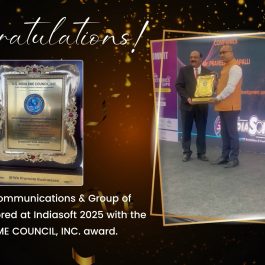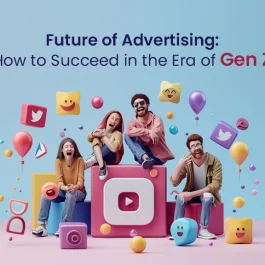6 min read

Content marketing has become a necessary component of any successful digital marketing strategy. However, with the overwhelming amount of content available online, it is becoming increasingly challenging for businesses to stand out from the crowd and engage their target audience effectively. This is where intelligent content strategies come into play. By implementing intelligent content strategies, businesses can not only boost their digital marketing efforts but also create meaningful and personalized experiences for their customers. In this blog post, we will explore the concept of intelligent content and discuss five key strategies to help you enhance your digital marketing efforts.
Table of Contents
Understanding Intelligent Content
Intelligent content refers to content that is structured, modular, and semantically rich. It is designed to be reusable, adaptable, and responsive across various platforms and devices. Unlike traditional static content, intelligent content is dynamic, personalized, and tailored to meet the specific needs of individual users. By leveraging intelligent content, businesses can deliver the right content to the right audience at the right time, resulting in improved engagement, conversions, and customer satisfaction.
Conducting Content Audits
Before implementing intelligent content strategies, it is essential to conduct a thorough content audit. A content audit helps you identify gaps, areas for improvement, and opportunities for optimization within your existing content. Here are the key steps for conducting a content audit:
Step 1: Identify Content Goals
Define your content marketing objectives and ensure that they are consistent with your overall business goals. This will provide a clear direction for your content audit.
Step 2: Evaluate Content Quality
Assess the quality of your existing content. Look for outdated or irrelevant information, grammatical errors, and inconsistencies in tone or style. Remove or update any content that no longer serves its purpose or aligns with your brand identity.
Step 3: Analyze Performance Metrics
Analyze performance metrics such as page views, bounce rates, time on page, and conversion rates to identify high-performing and underperforming content. This data will give you insights into what type of content resonates with your audience and what needs improvement.
Step 4: Identify Content Gaps
Identify any gaps in your content library. Are there any topics or formats that are missing? Understanding these gaps will help you create a well-rounded and comprehensive content strategy.
By conducting a content audit, you can gain a deep understanding of your existing content assets and lay the foundation for implementing intelligent content strategies.
Implementing Personalization
Personalization is a key component of intelligent content strategies. By tailoring your content to meet the specific needs and preferences of individual users, you can deliver a more personalized experience that resonates with your audience. Here are some ways to implement personalization in your digital marketing efforts:
-
User Segmentation
Segment your audience based on demographics, behavior, interests, or any other relevant factors. Create targeted content for each segment to ensure relevance and engagement.
-
Dynamic Content
Leverage dynamic content to display personalized messages or offers based on user behavior or preferences. This could include personalized product recommendations or tailored email newsletters.
-
Personalized Landing Pages
Create personalized landing pages that speak directly to each user’s needs and interests. Use dynamic elements, such as personalized headlines or images, to make the experience more engaging.
-
Behavioral Triggers
Implement behavioral triggers that automatically deliver personalized content based on user actions or interactions with your website or app. For example, sending a follow-up email with relevant content after a user downloads a whitepaper.
By implementing personalization strategies, you can create more meaningful connections with your audience and drive higher engagement and conversions.
Leveraging Automation
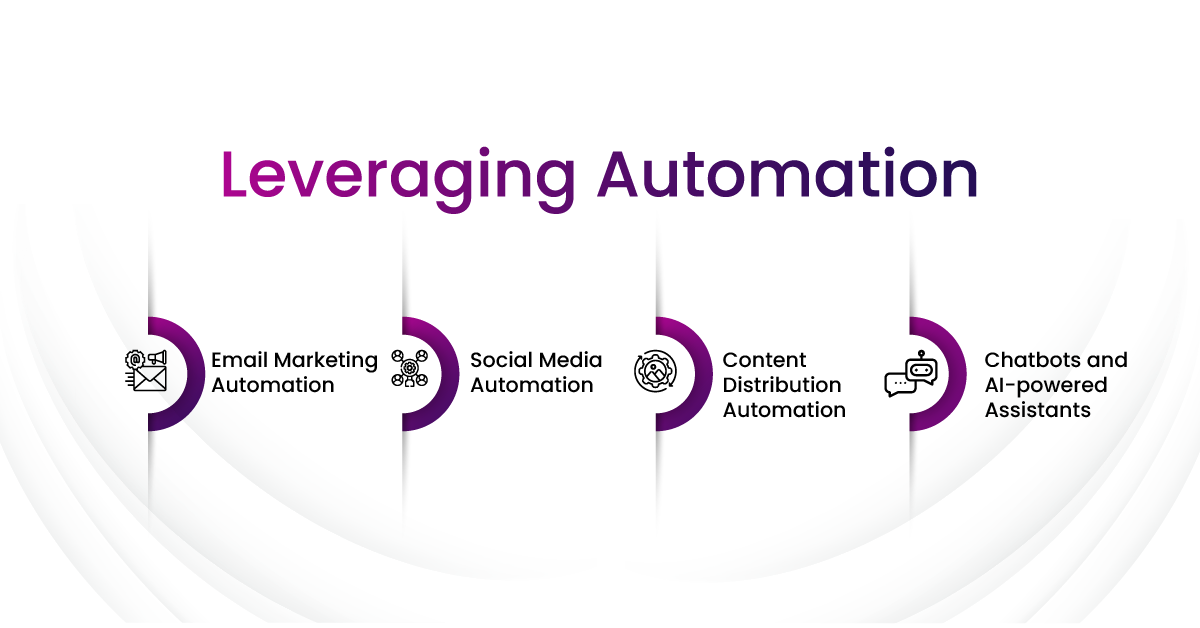
Automation plays a crucial role in optimizing digital marketing efforts and scaling intelligent content strategies. By automating repetitive tasks and processes, businesses can save time and resources while delivering consistent and targeted content experiences. Here are some ways to leverage automation in your digital marketing efforts:
-
Email Marketing Automation
Use marketing automation tools to send personalized emails based on user behavior or predefined triggers. This could include welcome emails, abandoned cart reminders, or nurturing campaigns.
-
Social Media Automation
Automate social media posting to ensure consistent sharing of relevant and engaging content across various platforms. Schedule posts in advance and use tools to monitor engagement and respond to comments or messages.
-
Chatbots and AI-powered Assistants
Implement chatbots or AI-powered assistants to provide instant support and personalized recommendations to website visitors. These automated assistants can handle basic inquiries, collect user information, and provide tailored suggestions.
-
Content Distribution Automation
Automate the distribution of your content across multiple channels to maximize reach and engagement. Use tools that allow you to schedule social media posts, publish blog articles automatically, or syndicate content to relevant platforms.
Automation can significantly streamline your digital marketing efforts, allowing you to focus on creating high-quality content and engaging with your audience.
Embracing Interactive Content
Interactive content is a powerful tool for engaging users and enhancing their digital business experience. Interactive elements such as quizzes, polls, calculators, assessments, or interactive videos can capture attention, encourage participation, and provide valuable insights into user preferences. The following are some examples of interactive content:
-
Quizzes and Assessments
Create quizzes or assessments that allow users to test their knowledge or evaluate their skills. Provide personalized results or recommendations based on their responses.
-
Interactive Infographics
Transform traditional infographics into interactive experiences by adding animations, clickable elements, or embedded videos. This allows users to explore the information at their own pace and engage with the content more actively.
-
Virtual Tours or Product Demos
Offer virtual tours or product demos that allow users to experience your products or services firsthand. This immersive experience can build trust, increase conversions, and reduce purchase hesitation.
-
Gamification
Implement gamification elements such as leaderboards, badges, or rewards to incentivize user engagement and create a sense of competition or achievement.
By embracing interactive content, you can capture user attention, increase time spent on your website or app, and gather valuable insights into user preferences and behaviors.
Intelligent Content can be Made Reusable in Several Practical Ways:
- Structured Markup: By using structured markup languages like XML or HTML5, content can be organized and tagged with metadata, making it easier to identify and reuse specific elements. This allows for greater flexibility in repurposing content across different platforms and devices.
- Content Componentization: Breaking down content into modular components allows for more granular reuse. By separating content into smaller, self-contained units, such as paragraphs, images, or videos, these components can be mixed and matched to create new content variations quickly and efficiently.
- Metadata Tagging: Applying metadata tags to content elements provides additional context and information about the content, making it easier to search, categorize, and retrieve specific pieces of content for reuse. This helps content creators locate relevant content quickly and ensures that the right content is used in the right context.
- Content Management Systems (CMS): Utilizing a CMS enables centralized storage, organization, and retrieval of intelligent content. CMS platforms provide features like version control, workflow management, and content reuse capabilities. This makes it easier to manage and repurpose intelligent content across different channels and formats.
- Content Personalization: Intelligent content can be designed to dynamically adapt and personalize based on user preferences, context, or device. This allows for the creation of customized experiences while reusing the same core content. Personalization can be achieved through techniques like conditional logic, rule-based systems, or machine learning algorithms.
- Content Automation: Leveraging automation tools and technologies can streamline content creation and enable efficient reuse. For example, using natural language processing (NLP) algorithms, chatbots or virtual assistants can generate personalized responses by reusing existing intelligent content based on user queries.
- Content Collaboration: Encouraging collaboration among content creators fosters the exchange of ideas, knowledge, and reusable content components. By implementing a collaborative environment, teams can leverage each other’s expertise and contribute to a centralized repository of reusable, intelligent content.
- Content Governance: Establishing clear guidelines, standards, and workflows for content creation, maintenance, and reuse ensures consistency and quality. Content governance frameworks help manage the lifecycle of intelligent content and ensure that reusable content remains up-to-date, accurate, and relevant.
By implementing these practical approaches, organizations can maximize the value of their intelligent content by making it highly reusable across various channels, platforms, and contexts.
An Example Template Illustrating How Intelligent Content can be Structured is:
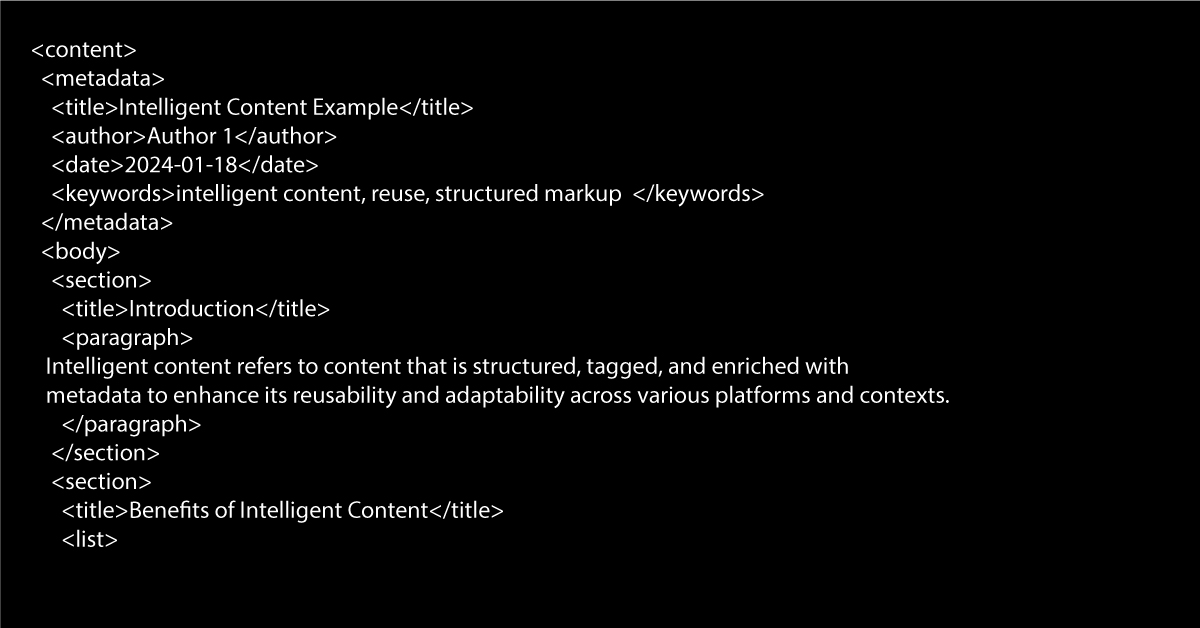
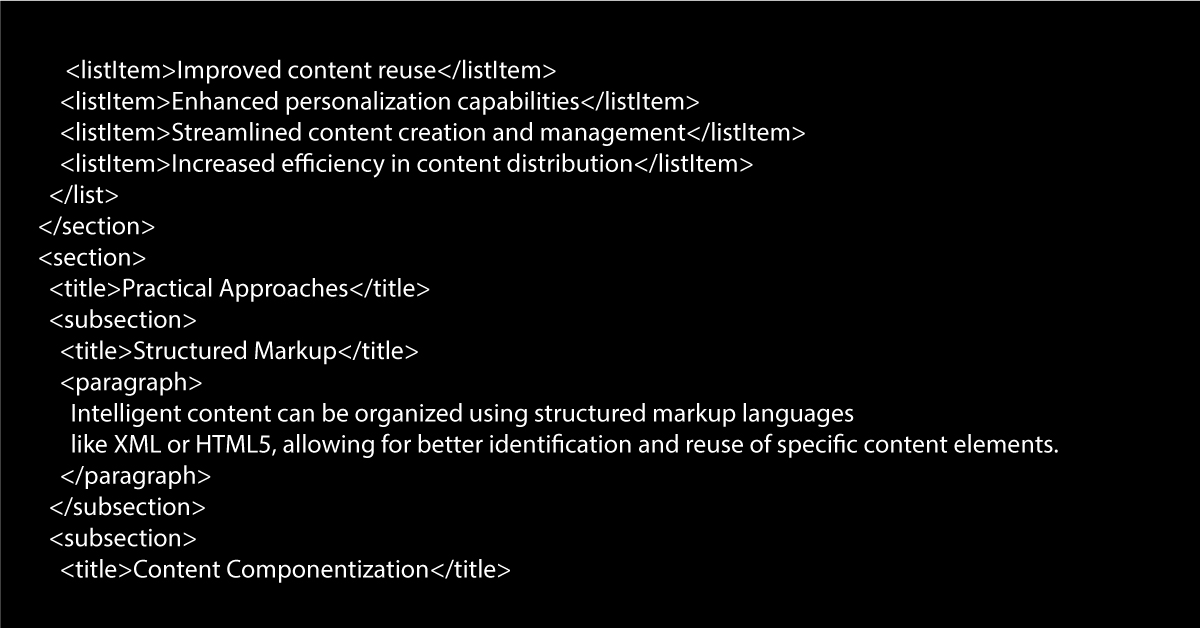
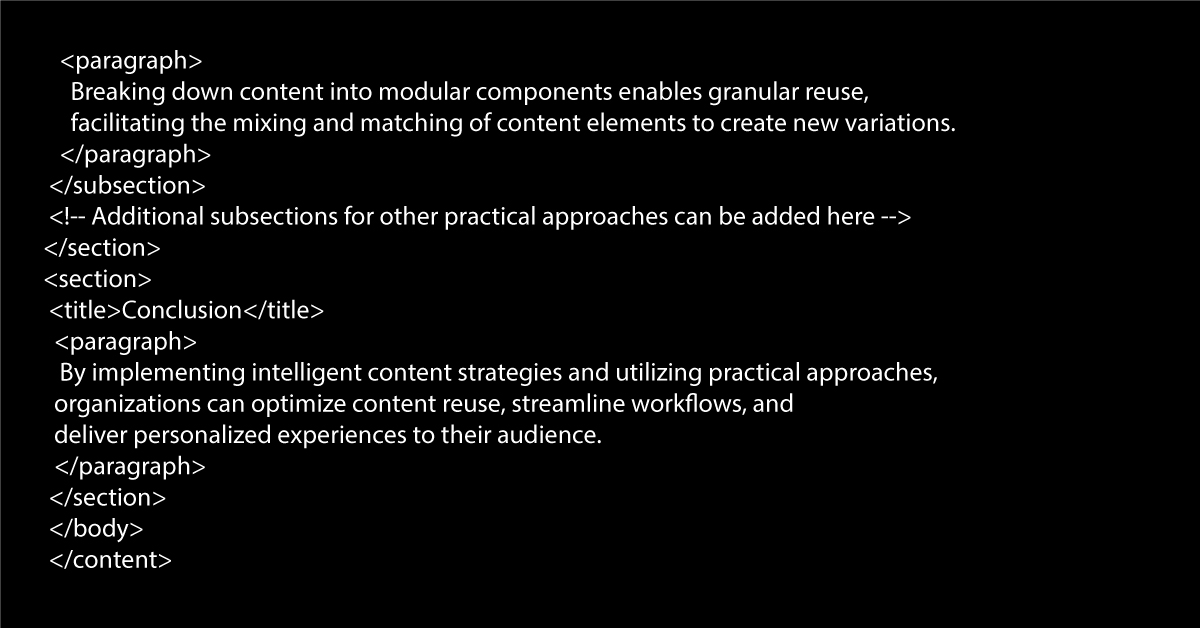
In this example, the intelligent content template includes metadata tags (such as title, author, date, and keywords) for providing additional information about the content. The body section consists of different sections and subsections, each containing titles and paragraphs or lists to organize and present the content in a structured manner. This template demonstrates how intelligent content can be designed to maximize reuse and facilitate efficient management.
Conclusion
Intelligent content strategies have the power to transform your digital marketing efforts and create personalized experiences that resonate with your target audience. By conducting a content audit, implementing personalization techniques, leveraging automation tools, and embracing interactive content, you can take your digital marketing strategy to the next level. Remember that intelligent content is an ongoing process that requires continuous monitoring, analysis, and optimization. Stay updated with the latest trends and technologies in the field of digital marketing to ensure your strategies remain effective in this ever-evolving landscape.
Published: January 18th, 2024
